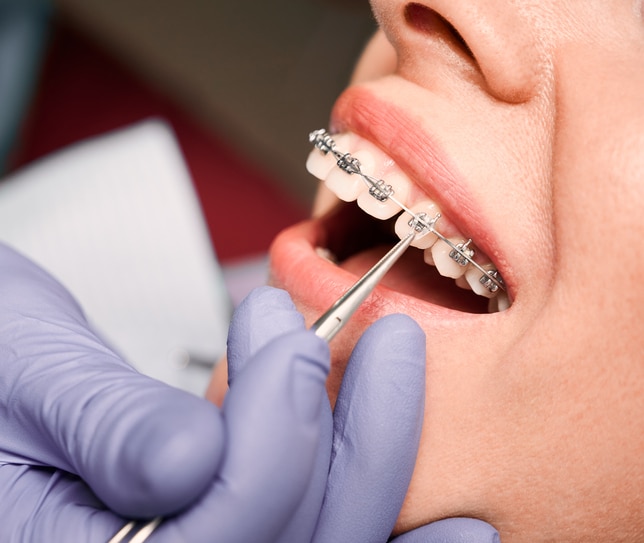Locating the Right Cumming Orthodontist for Your Braces and Aligners Needs
Locating the Right Cumming Orthodontist for Your Braces and Aligners Needs
Blog Article
Comprehensive Guide to Orthodontics Procedures for Correcting Oral Misalignments
Understanding the intricacies of each treatment, including their devices, advantages, and possible downsides, is essential in making informed decisions about one's orthodontic treatment. As we browse via the thorough overview to orthodontic treatments for dealing with dental misalignments, the elaborate information of each approach will unravel, dropping light on the course towards a functional and unified oral placement.
Orthodontic Procedures Overview

In enhancement to clear aligners and conventional dental braces, orthodontists might additionally recommend various other interventions like headwear, palatal expanders, or retainers to resolve details placement issues (braces). These procedures are tailored to every client's distinct requirements and may entail a mix of treatments to achieve the preferred results. Routine adjustments and surveillance are essential components of orthodontic therapy to guarantee development is on track and to make any needed alterations along the road. By undertaking orthodontic treatments, patients can not only achieve a straighter smile yet also enhance their general dental health and feature.
Traditional Braces: How They Function
When thinking about orthodontic treatments for dental misalignments, typical dental braces attract attention as a reliable approach for dealing with teeth positioning. Standard dental braces are composed of braces, wires, and bands that interact to apply constant pressure on the teeth, progressively moving them right into the preferred placement. The braces are connected to the teeth utilizing a special adhesive, and the wires are threaded through the brackets. By changing the tension of the wires, orthodontists can manage the instructions and force related to each tooth, guiding them right into correct alignment gradually.
As pressure is used to the teeth through the dental braces, the bone surrounding the teeth is reshaped to support the new tooth placements. Individuals will certainly need regular modifications at the orthodontist's workplace to make sure the braces proceed to apply the right stress for reliable teeth motion.
Unnoticeable Aligners: Pros and Disadvantages
These clear, tailor-made trays are essentially invisible when put on, making them an enticing option for individuals seeking a much more aesthetically pleasing orthodontic therapy. People can get rid of the aligners prior to consuming or cleaning their teeth, decreasing the threat of food obtaining stuck in the device and streamlining the cleansing process.

Surgical Orthodontic Options
Surgical treatments in orthodontics present practical choices for dealing with complicated oral imbalances that may not be properly settled via standard orthodontic treatments. While invisible aligners and conventional braces can deal with many orthodontic concerns, specific situations need medical treatment to attain optimum results. Surgical orthodontic alternatives are generally suggested for severe malocclusions, significant jaw discrepancies, and cases where the underlying bone framework requires alteration to achieve appropriate positioning.
One common surgical orthodontic procedure is orthognathic surgical procedure, which entails dentist office near me open today rearranging the jaws to fix useful issues such as trouble talking or chewing. This surgery is typically done in collaboration with an orthodontist who aids line up the teeth before and after the treatment. Surgical orthodontics may likewise include treatments to expose impacted teeth, eliminate excess periodontal tissue, or improve the jawbone to produce a more harmonious face account.
Before considering surgical orthodontic options, clients undertake an extensive assessment to establish the necessity and prospective benefits of such interventions. cumming orthodontics. While surgery might seem overwhelming, it can significantly improve both the function and aesthetic appeals of the smile in instances where standard orthodontic therapies fail
Retainers and Post-Treatment Care

Post-treatment care includes following the orthodontist's guidelines vigilantly. This might consist of proper dental health techniques, attending follow-up consultations, and putting on the retainers as suggested. Failing to follow post-treatment care directions can cause relapse, where the teeth gradually move back in the direction of their initial settings. Consistent retainer wear, good dental hygiene, and normal dental examinations are crucial for maintaining the outcomes accomplished with orthodontic surgical procedure and making sure the lasting stability of the fixed oral alignment.
Verdict
In conclusion, orthodontic procedures supply numerous choices for fixing dental imbalances. Typical braces utilize metal brackets and wires to shift teeth right into correct positioning. Undetectable aligners offer a more discreet option but may not appropriate for all situations. Surgical orthodontic options are readily available for more serious imbalances. Retainers are frequently utilized post-treatment to keep the new placement. In general, orthodontic treatments can efficiently enhance dental health and aesthetic appearance.
As we browse with the extensive guide to orthodontic procedures for remedying oral misalignments, the detailed information of each technique will unravel, shedding light on the course toward a unified and practical oral alignment. - cumming braces
One of the most usual orthodontic therapies is the usage of dental braces, directory which are composed of metal braces and wires that apply mild pressure to gradually change teeth into the preferred position.When considering orthodontic treatments for dental misalignments, typical braces stand out as a time-tested method for correcting cosmetic dental clinic teeth positioning. Furthermore, unseen aligners might not be appropriate for intricate orthodontic concerns that need more significant teeth movement, as they are generally suggested for mild to modest cases. Retainers are personalized orthodontic tools made to hold teeth in their dealt with positions after the conclusion of orthodontic therapy.
Report this page